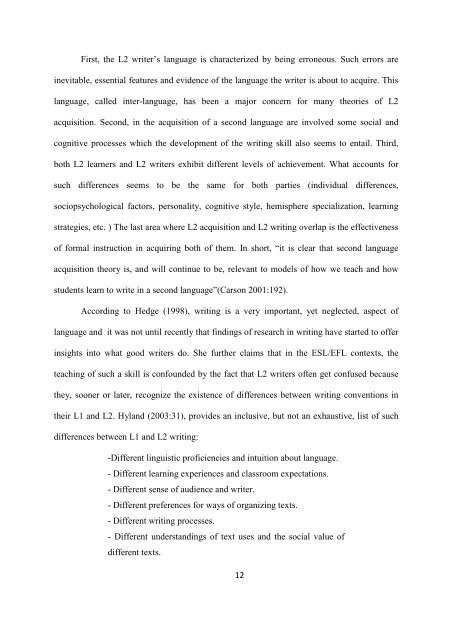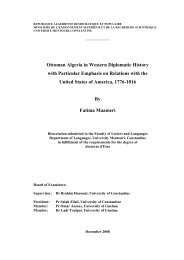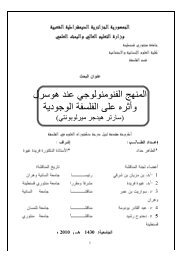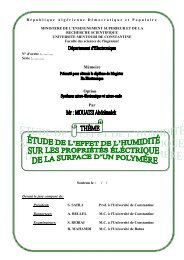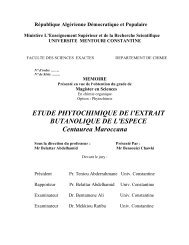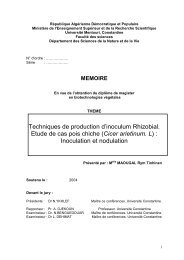Students' Response to Teachers' Feedback on Writing The Case of ...
Students' Response to Teachers' Feedback on Writing The Case of ...
Students' Response to Teachers' Feedback on Writing The Case of ...
You also want an ePaper? Increase the reach of your titles
YUMPU automatically turns print PDFs into web optimized ePapers that Google loves.
First, the L2 writer’s language is characterized by being err<strong>on</strong>eous. Such errors are<br />
inevitable, essential features and evidence <strong>of</strong> the language the writer is about <str<strong>on</strong>g>to</str<strong>on</strong>g> acquire. This<br />
language, called inter-language, has been a major c<strong>on</strong>cern for many theories <strong>of</strong> L2<br />
acquisiti<strong>on</strong>. Sec<strong>on</strong>d, in the acquisiti<strong>on</strong> <strong>of</strong> a sec<strong>on</strong>d language are involved some social and<br />
cognitive processes which the development <strong>of</strong> the writing skill also seems <str<strong>on</strong>g>to</str<strong>on</strong>g> entail. Third,<br />
both L2 learners and L2 writers exhibit different levels <strong>of</strong> achievement. What accounts for<br />
such differences seems <str<strong>on</strong>g>to</str<strong>on</strong>g> be the same for both parties (individual differences,<br />
sociopsychological fac<str<strong>on</strong>g>to</str<strong>on</strong>g>rs, pers<strong>on</strong>ality, cognitive style, hemisphere specializati<strong>on</strong>, learning<br />
strategies, etc. ) <strong>The</strong> last area where L2 acquisiti<strong>on</strong> and L2 writing overlap is the effectiveness<br />
<strong>of</strong> formal instructi<strong>on</strong> in acquiring both <strong>of</strong> them. In short, “it is clear that sec<strong>on</strong>d language<br />
acquisiti<strong>on</strong> theory is, and will c<strong>on</strong>tinue <str<strong>on</strong>g>to</str<strong>on</strong>g> be, relevant <str<strong>on</strong>g>to</str<strong>on</strong>g> models <strong>of</strong> how we teach and how<br />
students learn <str<strong>on</strong>g>to</str<strong>on</strong>g> write in a sec<strong>on</strong>d language”(Cars<strong>on</strong> 2001:192).<br />
According <str<strong>on</strong>g>to</str<strong>on</strong>g> Hedge (1998), writing is a very important, yet neglected, aspect <strong>of</strong><br />
language and it was not until recently that findings <strong>of</strong> research in writing have started <str<strong>on</strong>g>to</str<strong>on</strong>g> <strong>of</strong>fer<br />
insights in<str<strong>on</strong>g>to</str<strong>on</strong>g> what good writers do. She further claims that in the ESL/EFL c<strong>on</strong>texts, the<br />
teaching <strong>of</strong> such a skill is c<strong>on</strong>founded by the fact that L2 writers <strong>of</strong>ten get c<strong>on</strong>fused because<br />
they, so<strong>on</strong>er or later, recognize the existence <strong>of</strong> differences between writing c<strong>on</strong>venti<strong>on</strong>s in<br />
their L1 and L2. Hyland (2003:31), provides an inclusive, but not an exhaustive, list <strong>of</strong> such<br />
differences between L1 and L2 writing:<br />
-Different linguistic pr<strong>of</strong>iciencies and intuiti<strong>on</strong> about language.<br />
- Different learning experiences and classroom expectati<strong>on</strong>s.<br />
- Different sense <strong>of</strong> audience and writer.<br />
- Different preferences for ways <strong>of</strong> organizing texts.<br />
- Different writing processes.<br />
- Different understandings <strong>of</strong> text uses and the social value <strong>of</strong><br />
different texts.<br />
12


